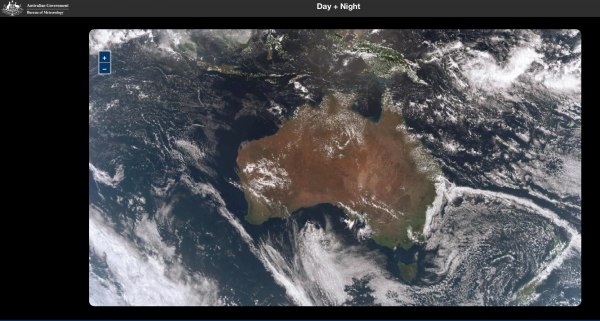
08 October 2015
Imagine on Monday as the hail storm was rolling in from the south, being able to log on and see if it is heading for your place...now you can do just that!
Australians can now access near real-time information on weather events after the Bureau of Meteorology made data from the new billion-dollar Japanese Himawari-8 satellite available to the public.
Members of the public can access the imagery through a new Web Viewer which was launched last week. The development was first reported by IT News.
The Bureau of Meterology is one of many weather agencies around the world making use of the satellite, which was launched into space late last year and began operating in July.
The satellite generates more than 50 times the amount of data than its predecessor, and is expected to feed information back to Earth until 2022.
It updates every 10 minutes, as opposed to every hour as with the previous system. It gives the BoM's forecasters access to 16 observation wavebands capturing detail from layers of the atmosphere.

The speed at which weather data can now be provided to the BoM will allow forecasters to gain greater and more detailed situational awareness of evolving severe weather conditions, BoM director Dr Rob Vertessy said.
He labelled Himawari-8 a "game changer" for the weather bureau.
Himawari-8 is one giant leap in satellite meteorology: it's like switching from black and white TV to high definition colour in one jump," Vertessy said in a statement.
"Or you could compare it to switching from the grainy images of the silent era to IMAX. You can see unfolding weather in detail we've only dreamed of in the past."
The new satellite provides images at a much finer quality, he said, approximately four times the spatial resolution of previous satellite images - meaning the BoM can see specific phenomena like volcanic ash that could not previously be distinguished.
People will be able to zoom in over their region and watch storm cells as well as natural events like fires.
The BoM expects the agency's capabilities to be further boosted by the arrival of its new $77 million supercomputer mid next year.
The skill of weather forecasters has improved dramatically over decades because of faster supercomputers that allow us to run models at far greater detail, and the growing ability of satellites to detect weather phenomena that were hitherto invisible," Vertessy told IT News.
"Weather computer models ingest data and extrapolate to provide a forecast. The better the data we put in, the better the forecast that comes out," he said yesterday.
3 Strategies to Reduce Telecom Cost